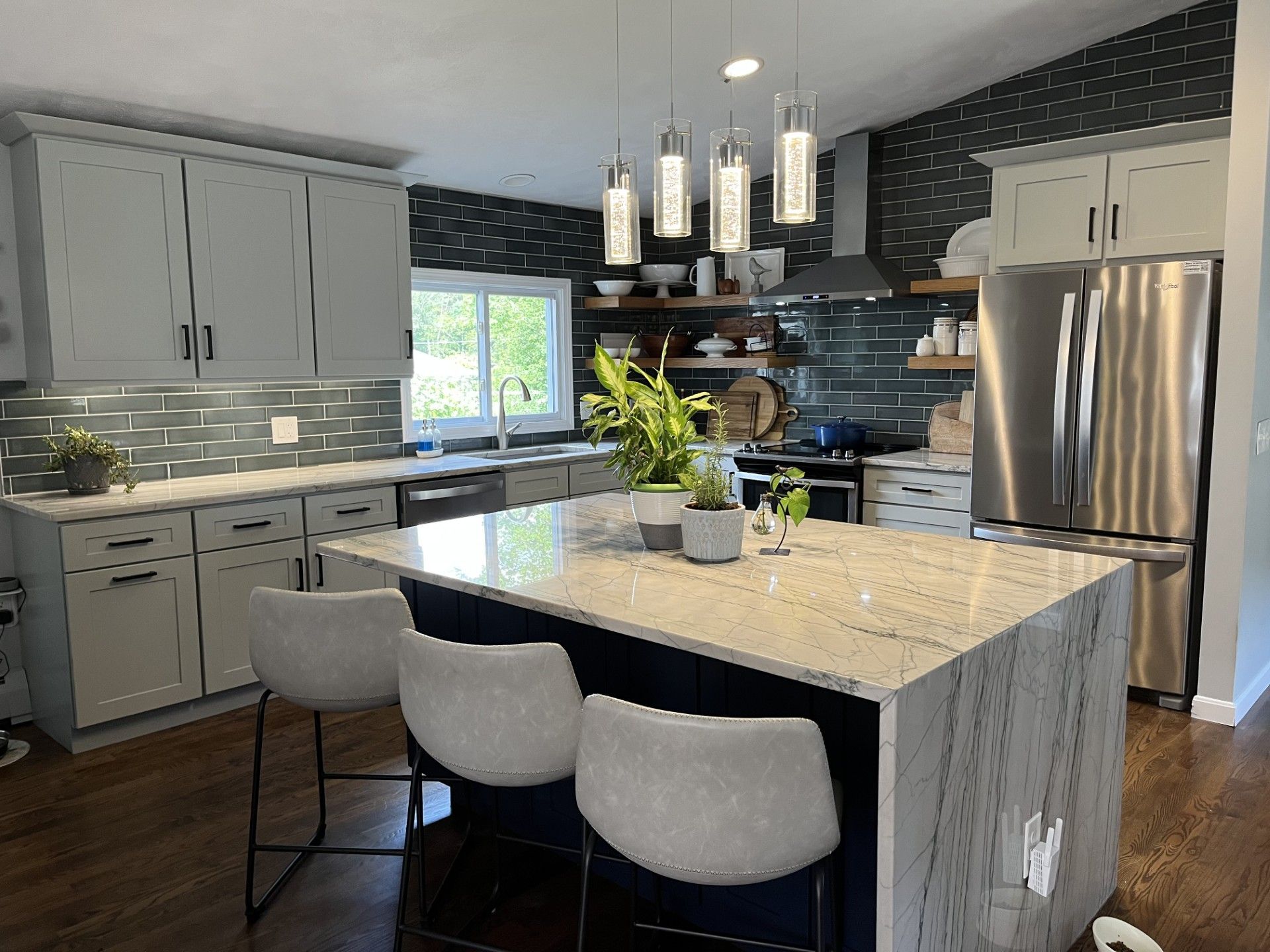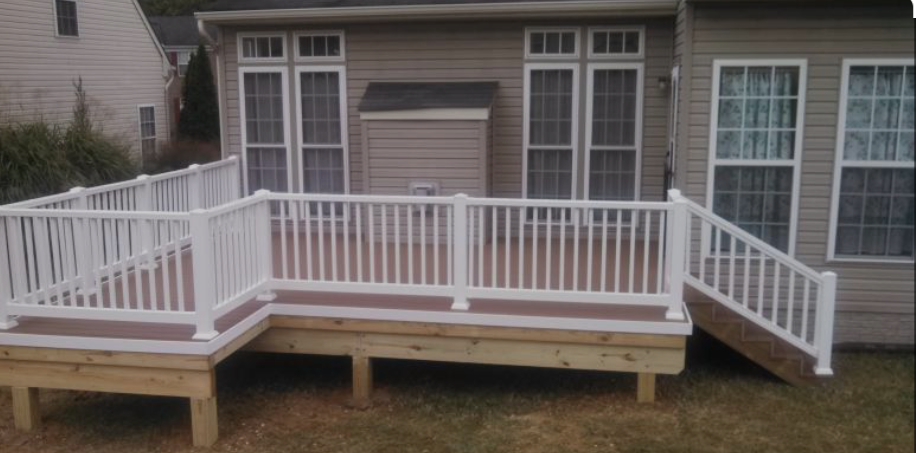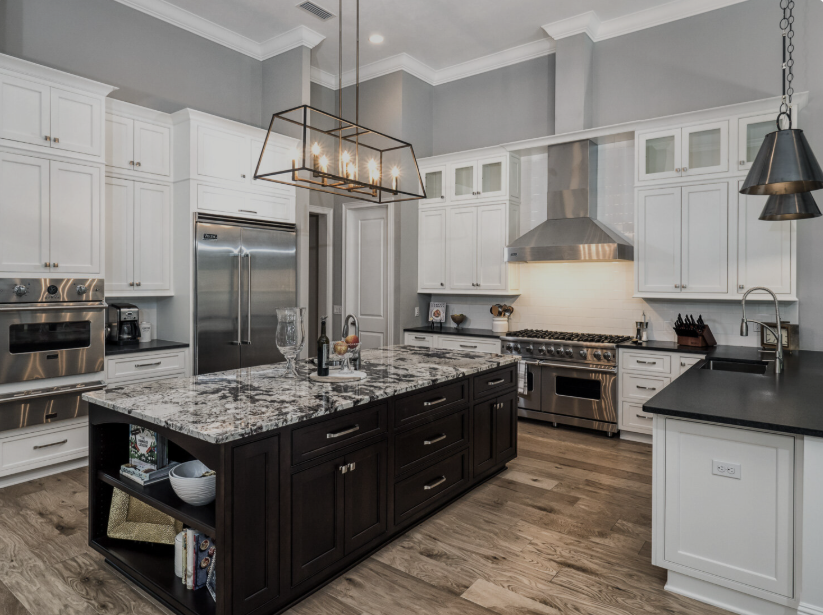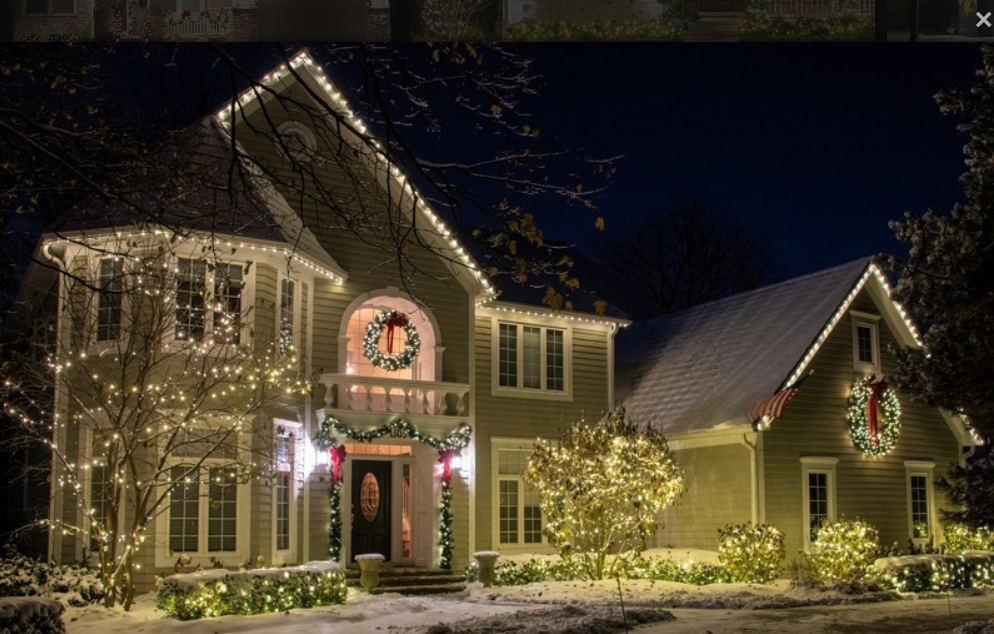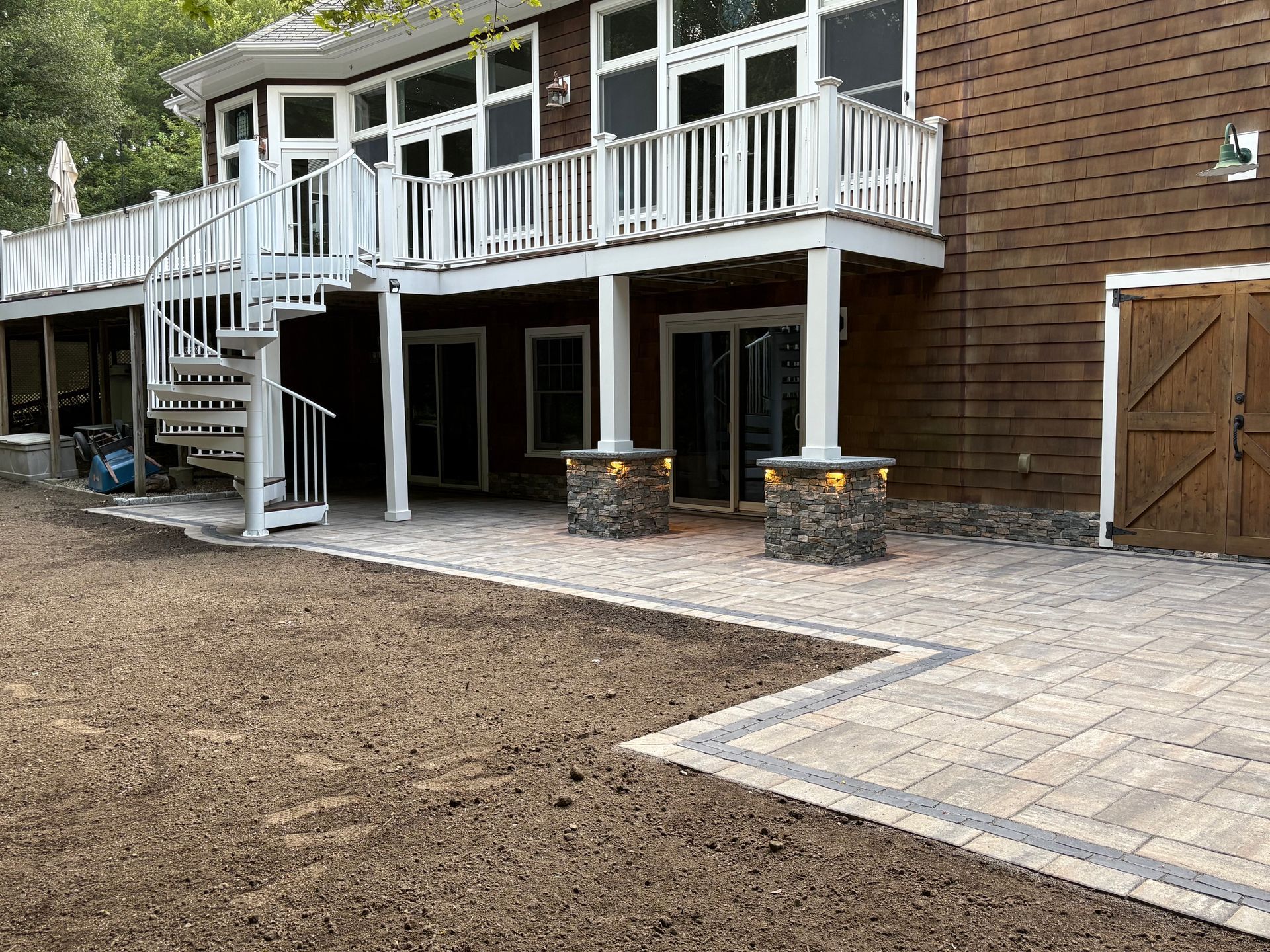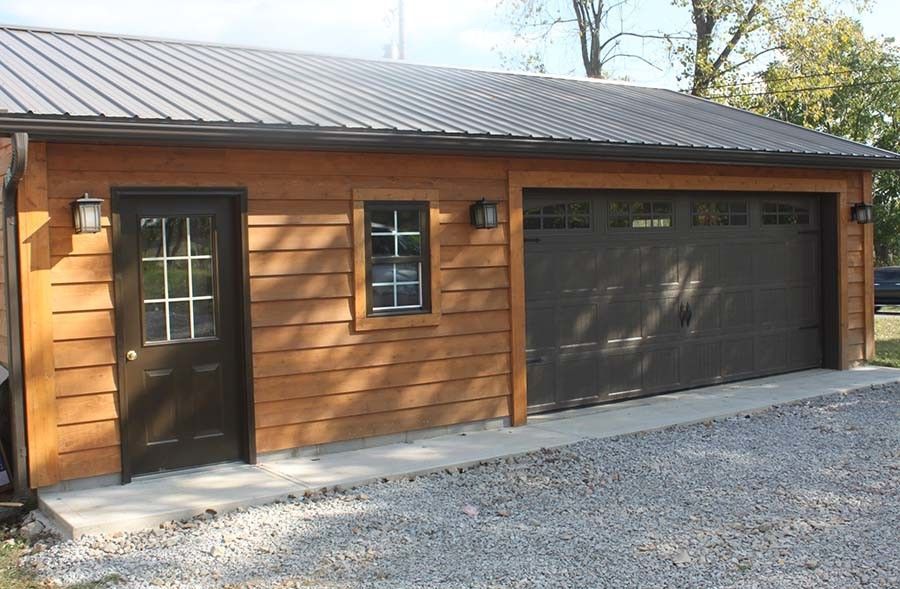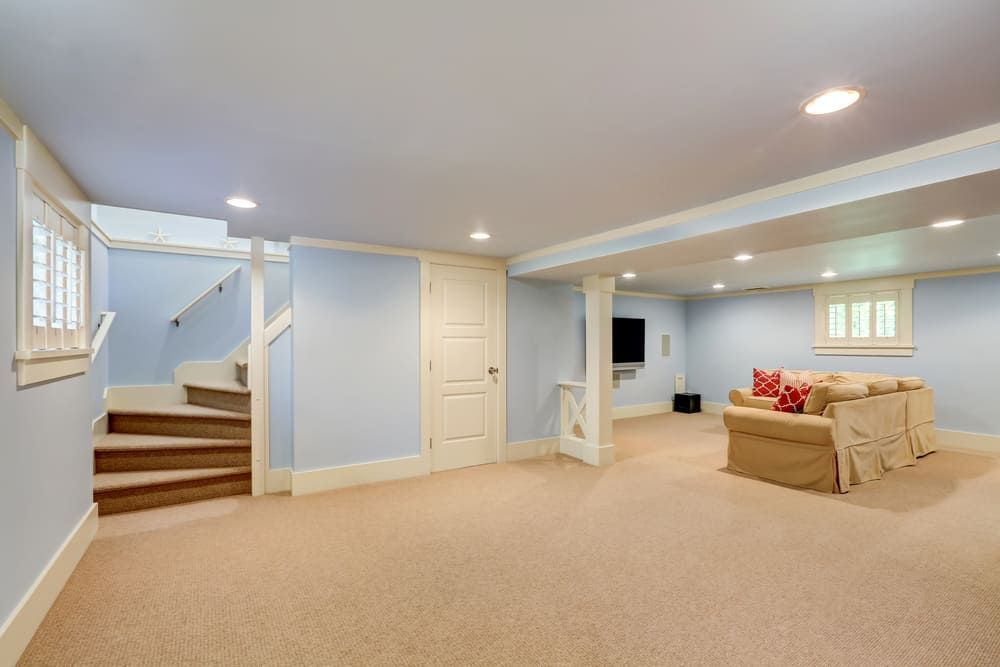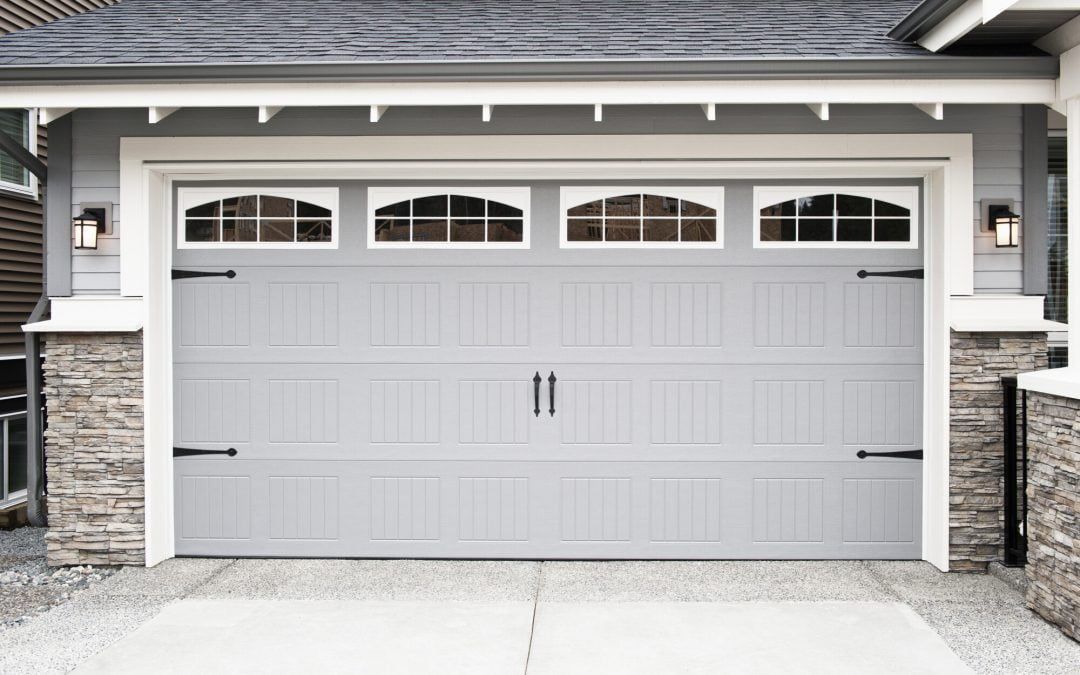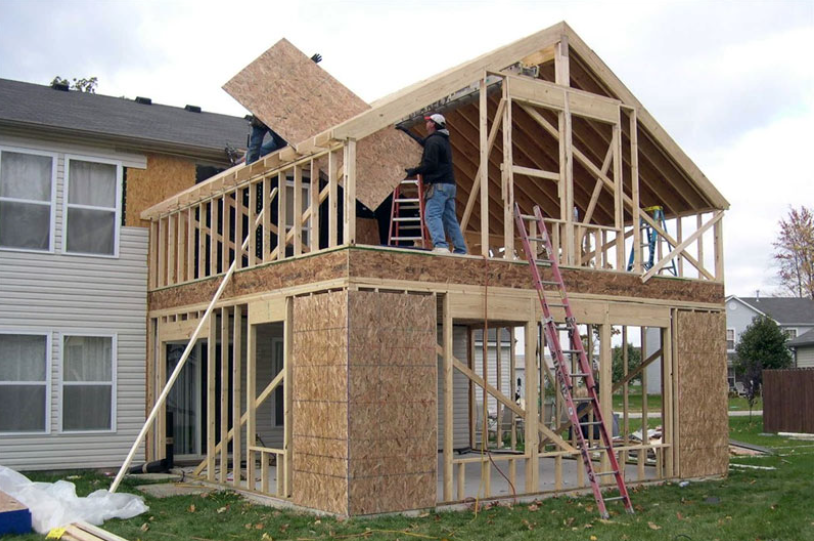Home Addition vs Moving in Rhode Island
Rhode Island homeowners facing space constraints face a critical decision: build an addition or buy a larger home? With the Ocean State's competitive real estate market, rising home prices, and limited inventory, this choice has never been more complex. Understanding the true costs, benefits, and long-term implications helps you make the right decision for your family and finances.
Is It Cheaper to Add On or Move in Rhode Island?
For most Rhode Island homeowners, adding onto your current home costs 20-40% less than moving to a comparable larger home when you factor in all expenses. A typical home addition costs $150,000-$250,000, while moving expenses including closing costs, real estate commissions, moving costs, and higher mortgage payments often exceed $75,000-$150,000 in the first year alone. However, the best choice depends on your specific situation, neighborhood, home condition, and long-term plans.
The True Cost of Moving in Rhode Island
Moving costs extend far beyond down payments and mortgage differences. Understanding the complete financial picture is essential.
Real Estate Transaction Costs
Selling Your Current Home: Real estate agent commissions typically run 5-6% of sale price. For a $400,000 Rhode Island home, expect $20,000-$24,000 in commissions. Seller concessions to buyers add $5,000-$15,000. Pre-sale repairs and improvements cost $5,000-$20,000. Home staging expenses run $2,000-$5,000. Attorney fees in Rhode Island range $800-$1,500.
Buying Your New Home: Closing costs typically total 2-5% of purchase price. On a $550,000 home, expect $11,000-$27,500 in closing costs. Home inspection fees cost $400-$600. Appraisal fees run $400-$600. Title insurance ranges $1,000-$2,000. Property survey costs $400-$800. Additional attorney fees are $1,000-$1,500.
Total Transaction Costs: Selling a $400,000 home and buying a $550,000 replacement typically costs $35,000-$70,000 in transaction fees alone before considering moving expenses or down payment differences.
Moving and Transition Expenses
Physical Moving Costs: Professional movers in Rhode Island charge $1,500-$5,000 for local moves depending on home size and distance. Packing materials and supplies cost $200-$500. Storage during transition runs $100-$300 monthly. Cleaning services for old home cost $200-$500. Utility connection and disconnection fees total $200-$400.
Immediate New Home Expenses: Fresh paint and decorating cost $2,000-$8,000. Window treatments for new home run $1,000-$5,000. Landscaping and outdoor improvements range $2,000-$10,000. Immediate repairs buyers negotiate often total $3,000-$15,000. New furniture for different layout costs $3,000-$15,000.
Ongoing Cost Differences
Increased Housing Expenses: Moving typically means higher mortgage payments. A $150,000 mortgage increase at current rates adds approximately $900-$1,100 to monthly payments, totaling $10,800-$13,200 annually. Higher property taxes on more expensive home add $1,500-$4,000 yearly. Increased homeowners insurance costs $300-$800 annually. Higher utilities for larger home add $500-$1,500 yearly. Greater maintenance expenses for bigger property cost $1,000-$3,000 annually.
Total First-Year Moving Costs: Combining all expenses, moving from a $400,000 to a $550,000 home in Rhode Island typically costs $75,000-$150,000+ in the first year when including transaction costs, moving expenses, immediate improvements, and increased housing costs.
The True Cost of Home Additions in Rhode Island
Addition costs vary significantly by project type, size, and complexity, but provide predictable budgets without hidden transaction fees.
Addition Cost Ranges
Bathroom Additions: Powder rooms cost $15,000-$30,000. Full bathrooms run $25,000-$50,000. Luxury master bathrooms range $40,000-$80,000.
Bedroom Additions: Single bedroom additions cost $40,000-$80,000. Master suite additions run $80,000-$150,000. Second-story additions range $100,000-$280,000.
Kitchen Expansions: Bump-outs cost $40,000-$80,000. Full expansions run $60,000-$150,000. High-end expansions range $100,000-$200,000.
Sunrooms and Four-Season Rooms: Three-season rooms cost $30,000-$70,000. Four-season additions run $50,000-$120,000.
Garage Additions: Single-car garages cost $30,000-$50,000. Two-car garages run $40,000-$80,000.
General Square Footage Costs: Basic additions average $200-$250 per square foot. Mid-range additions cost $250-$350 per square foot. High-end additions range $350-$500+ per square foot.
Addition Financing Costs
Home Equity Line of Credit (HELOC): Current Rhode Island HELOC rates range 7-10%. Interest-only payments during construction keep costs manageable. Flexibility to draw funds as needed. Typically lower closing costs than refinancing.
Cash-Out Refinance: May secure lower rate than HELOC if current mortgage rate is high. Provides lump sum for entire project. Extends mortgage term potentially increasing total interest. Works well when refinancing also reduces existing rate.
Construction Loan: Specifically designed for addition projects. Interest-only payments during construction phase. Converts to traditional mortgage after completion. May have higher rates than other options.
Home Equity Loan: Fixed rate provides payment certainty. Lump sum disbursement at closing. Separate from existing mortgage. Good for defined project costs.
Hidden Addition Costs to Consider
Temporary Living Adjustments: Kitchen additions may require eating out frequently, adding $1,000-$3,000. Bathroom additions might need temporary gym memberships or facilities. Noise and dust disrupt daily routines. Some additions require temporary relocation for 1-2 weeks.
Property Tax Impact: Additions increase assessed value raising property taxes. Rhode Island reassessment typically adds $15-$30 per year per $1,000 of value added. A $150,000 addition might increase annual taxes $2,250-$4,500. Still typically less than tax increase from moving to more expensive home.
When Moving Makes More Sense
Despite addition advantages, certain situations favor moving.
Your Home Has Fundamental Issues
Structural Problems: Foundation issues costing $15,000-$100,000+ to repair. Severe water damage or mold requiring extensive remediation. Roof requiring complete replacement costing $10,000-$30,000. Multiple major systems (HVAC, plumbing, electrical) nearing end of life. Adding onto compromised structure risks good money after bad.
Location Disadvantages: Declining neighborhood affecting long-term value. Schools not meeting family needs. Commute to work exceeding reasonable limits. Safety concerns in the area. Lack of community amenities important to lifestyle.
Lot Limitations: Insufficient space for desired addition type. Zoning restrictions preventing needed expansion. Setback requirements making additions impractical. Wetlands or environmental constraints limiting options. Steep slopes or challenging topography increasing costs dramatically.
You Need Different Rather Than Just More Space
Layout Cannot Be Fixed: Home's fundamental flow and layout poorly designed. Addition cannot address core functionality issues. Room proportions and ceiling heights inadequate. Historical features preventing necessary changes.
Lifestyle Changes: Downtown urban living desired over suburban setting. Waterfront or water view property priority. Single-story living needed for aging in place but home is multi-story. Complete style change wanted (modern vs traditional). Home's character fundamentally misaligned with preferences.
Long-Term Plans: Planning to relocate for work within 2-3 years. Children attending different school district soon. Retirement location already identified. Addition ROI timeline doesn't align with occupancy plans.
The Math Strongly Favors Moving
Neighborhood Value Ceiling: Current home at or near top of neighborhood values. Addition would over-improve beyond recovery potential. Comparable homes with features you want selling at minimal premium. Market research shows poor addition ROI in your specific area.
Extremely Affordable Upgrade Options: Distressed properties available at significant discounts. Estate sales or motivated sellers creating opportunities. Market inventory suddenly increasing with good options. Buying opportunity significantly better than building.
When Home Additions Make More Sense
Most Rhode Island homeowners find additions offer superior value in these common scenarios.
You Love Your Location
Neighborhood Benefits: Established community relationships and friendships. Children settled in excellent schools. Convenient commute to work. Proximity to family and support network. Walkable neighborhood with amenities. Coastal or water access difficult to replace. Historic neighborhoods with character.
Location Premium: Barrington, East Side Providence, or Newport addresses command premium prices. Waterfront or water view properties increasingly scarce. Established neighborhoods with limited inventory. Location itself represents significant home value.
Your Home's Foundation is Solid
Good Bones: Strong structure supporting addition weight. Recent roof, HVAC, and major system updates. Foundation in excellent condition. Quality original construction. Home maintenance kept current. Building on solid base makes economic sense.
Desirable Base Features: Architectural character worth preserving. Hardwood floors and original details. Large lot supporting expansion. Garage and parking already adequate. Core home layout functional needing only more space.
The Numbers Favor Adding On
Cost Comparison: Addition costs significantly less than moving expenses plus mortgage increase. Current mortgage has favorable interest rate. Home equity sufficient for addition financing. Addition adds value approximately equal to cost in your market.
Market Conditions: Low housing inventory in Rhode Island limiting options. Competitive buying environment with bidding wars. Homes with features you want priced $200,000+ more than yours. High mortgage rates making larger loans expensive.
You Need Specific Space, Not Everything New
Targeted Needs: Simply need one more bedroom and bathroom. Kitchen expansion solves primary issue. Home office addition addresses remote work needs. Master suite creates needed privacy. Sunroom extends living season.
Most of Home Already Works: Love existing kitchen so expansion not needed. Bathrooms recently updated except needing one more. Living spaces adequate needing only bedroom addition. Garage and storage already sufficient.
Breaking Down the Comparison: Real Rhode Island Examples
Scenario 1: Growing Family in Cranston
Current Situation: Three-bedroom ranch worth $375,000. Family needs fourth bedroom and second full bathroom. Great neighborhood, excellent schools, convenient location. Current mortgage $250,000 at 3.5% interest, payment $1,122 monthly.
Moving Option: Four-bedroom homes in same Cranston neighborhood sell $525,000-$575,000. Choosing $550,000 home with $100,000 down payment. New mortgage $450,000 at 7% interest, payment $2,992 monthly. Transaction costs selling and buying $50,000. Moving and immediate expenses $15,000. Monthly payment increase $1,870. First year moving cost approximately $87,440.
Addition Option: Add 400-square-foot second story with bedroom and bathroom for $120,000. HELOC at 8.5% interest-only payment during 6-month construction $850 monthly. Convert to home equity loan, 20-year payment $1,036 monthly. Temporary living adjustment costs $3,000. First year addition cost approximately $15,432 ongoing. Total first-year commitment including construction $135,432 but most is equity.
Verdict: Addition saves approximately $70,000+ first year while staying in beloved neighborhood. Addition makes strong sense.
Scenario 2: Empty Nesters in East Greenwich
Current Situation: Four-bedroom colonial worth $650,000. Children moved out, maintaining large home burdensome. Desire single-story living for aging in place. Current mortgage $200,000 at 4% interest.
Moving Option: Desirable ranch homes in East Greenwich cost $550,000-$650,000. Downsizing to $600,000 ranch. After sale proceeds, buying with cash remaining $450,000 after transaction costs. No mortgage. Reduced property taxes save $1,500 yearly. Lower utilities save $1,200 yearly. Reduced maintenance saves $2,000 yearly.
Addition Option: Converting basement to first-floor master suite costs $80,000-$120,000 but doesn't solve large home maintenance. Adding first-floor addition while closing off upstairs costs $150,000+ and home still large for two people.
Verdict: Moving makes sense for lifestyle change, true downsizing, and eliminating maintenance burden. Addition doesn't solve core issues.
Scenario 3: Remote Workers in South Kingstown
Current Situation: Two-bedroom home worth $425,000. Both spouses work remotely sharing makeshift dining room office. Need two dedicated office spaces. Love coastal location, yard, and community. Current mortgage $280,000 at 3.25% interest.
Moving Option: Three-bedroom homes with office potential cost $550,000-$600,000 in area. Choosing $575,000 home. New mortgage $475,000 at 7% interest. Monthly payment increase approximately $2,000. Transaction costs $55,000. Moving costs $12,000. First year cost approximately $79,000.
Addition Option: Build 300-square-foot addition with two office spaces for $75,000-$90,000. Alternatively, finish basement for two offices at $45,000-$65,000. Home equity loan at 8% for $80,000, monthly payment $669. First year cost approximately $8,028 plus construction cost becomes equity.
Verdict: Addition solves specific need at fraction of moving cost while preserving beloved location.
Scenario 4: Historic Home in Newport
Current Situation: Three-bedroom historic home worth $900,000. Need fourth bedroom and updated kitchen. Historic district restricts exterior changes. Current mortgage $400,000 at 3.75% interest.
Moving Option: Four-bedroom historic Newport homes cost $1,200,000-$1,500,000. Even with home sale proceeds, significant additional investment required. Historic premium prices limit options. Few homes offer everything wanted.
Addition Option: Work with historic commission for approved addition design. Bump-out kitchen expansion costs $80,000-$120,000. Convert attic to bedroom suite for $90,000-$130,000. Total investment $170,000-$250,000. Historic commission approval adds time but preserves irreplaceable Newport address.
Verdict: Addition makes sense given location premium, historic character worth preserving, and prohibitive cost of comparable replacement properties.
Rhode Island Market Factors to Consider
Current Real Estate Climate
Low Inventory: Rhode Island faces persistent housing shortage. Available homes sell quickly, often with multiple offers. Limited choices constrains moving options. Competitive buying environment stressful and expensive.
Rising Home Prices: Rhode Island home values increased 40%+ from 2020-2024. Continued appreciation expected in desirable areas. Moving up ladder requires significant additional investment. Today's addition costs likely less than future home prices.
High Interest Rates: Mortgage rates 6.5-7.5% significantly higher than 2020-2021 rates below 3%. Homeowners with low rates reluctant to refinance. Moving means giving up favorable existing mortgage. Addition financing preserves existing mortgage rate.
Buyer Competition: Strong demand especially in East Bay, South County, coastal areas, and Providence's East Side. Bidding wars common in desirable neighborhoods. Buyers waiving contingencies to compete. Stressful buying process versus controlled addition timeline.
Regional Considerations
Coastal Communities: Limited development land restricts new construction. Water access premium continues growing. Properties like Newport, Narragansett, and Little Compton increasingly scarce. Additions protect irreplaceable locations.
Providence and Urban Areas: Urban renaissance driving demand. Limited land makes additions attractive option. Historic districts require sensitive approaches. Dense neighborhoods mean close neighbors regardless.
Suburban Rhode Island: More inventory than coastal areas but still limited. Family-friendly communities command premiums. School quality drives demand. Addition can maintain school district advantages.
Rural Rhode Island: Lower home prices make moving potentially attractive. More land for additions available. Fewer restrictions on expansion. Smaller market means longer selling timelines.
Hidden Advantages of Staying and Adding
Intangible Benefits
Community Connections: Established friendships and neighbor relationships. Children's school friendships and activities. Familiar local businesses and services. Community involvement and volunteer roles. Social capital accumulated over years.
Reduced Stress: Avoiding moving's massive disruption. No need to purge belongings or pack entire household. Children remain in stable environment. Pets stay in familiar surroundings. Maintain daily routines during construction.
School Continuity: Children avoid changing schools and friends. Maintain access to desired school districts. No adjustment period or social disruption. Preserve academic momentum and teacher relationships.
Neighborhood Knowledge: Understanding micro-climate and property quirks. Established relationships with service providers. Knowledge of traffic patterns and shortcuts. Familiarity with local regulations and procedures.
Financial Flexibility
Preserve Low Mortgage Rate: Keeping 3-4% mortgage versus refinancing at 7%+ saves hundreds monthly. Rate difference compounds to tens of thousands over time. Addition financing separate from existing mortgage.
Tax Advantages: Home equity loan and HELOC interest may be tax deductible. Addition increases basis in home reducing capital gains if eventually sold. Staging large investment over time may offer flexibility.
Build Equity: Addition spending builds equity in your property. Moving costs mostly one-time expenses with no return. Addition value typically recovers 50-80% at resale.
Making Your Decision: Key Questions
Evaluate Your Specific Situation
How long will you stay? Need 5+ years to recover addition costs through use and enjoyment. Moving within 2-3 years favors alternatives. Medium timeline makes addition generally favorable.
What's your true motivation? Needing more space strongly favors addition. Wanting different lifestyle or location suggests moving. Addressing specific functionality issues suits additions well.
What's your home's condition? Solid foundation and structure supports addition. Multiple major issues favor moving. Recent updates to systems make adding on attractive.
What's your neighborhood trajectory? Appreciating area supports addition investment. Declining area raises addition risk. Stable desirable location ideal for additions.
What's your financial flexibility? Cash or equity available makes additions accessible. Tight budget may require more creative solutions. Moving requires significant immediate capital.
Calculate Your Personal Breakeven
Consider total moving costs including transaction fees, moving expenses, monthly payment increases, and lifestyle adjustments. Compare to total addition costs including construction, financing, and temporary inconvenience. Factor in intangible benefits of staying versus moving. Evaluate timeline to recoup investment through use.
Most Rhode Island homeowners find additions break even versus moving in 3-5 years of ownership, sometimes sooner depending on specific circumstances.
Getting Started: Next Steps
Whether you choose to add on or move, thorough research and planning ensure success.
If You're Leaning Toward an Addition
Consult with experienced Rhode Island contractors to understand feasibility and realistic costs.
Get multiple detailed quotes comparing approaches and pricing.
Explore financing options with banks and credit unions familiar with Rhode Island market.
Review local zoning and building codes understanding restrictions and processes.
Consider hiring an architect for complex projects ensuring optimal design.
If You're Leaning Toward Moving
Get pre-approved for mortgage understanding buying power.
Research neighborhoods thoroughly visiting at different times.
Calculate complete moving costs including all hidden expenses.
Consider timing carefully given Rhode Island's seasonal market.
Work with experienced agent knowing Rhode Island markets intimately.
For most Rhode Island homeowners who love their location, have solid homes, and need more rather than different space, home additions offer superior value compared to moving. The combination of lower costs, avoiding transaction fees, preserving favorable mortgages, and maintaining community connections makes additions compelling choices. However, certain situations including fundamental home issues, location changes, or lifestyle transformations make moving the better option.
The key is analyzing your specific circumstances honestly, calculating complete costs accurately, and understanding both financial and quality-of-life factors. Rhode Island's competitive real estate market, limited inventory, and strong community bonds make staying and expanding increasingly attractive for many homeowners.
Ready to explore whether a home addition makes sense for your Rhode Island property? Rockhouse Construction helps homeowners throughout Rhode Island evaluate their options, providing realistic cost estimates and expert guidance on addition feasibility. We'll help you understand what's possible, what it will cost, and whether adding on offers better value than moving for your specific situation.
Contact Rockhouse Construction today for a no-obligation consultation about your space needs. Make the right choice. Get expert guidance. Build your future wisely.
